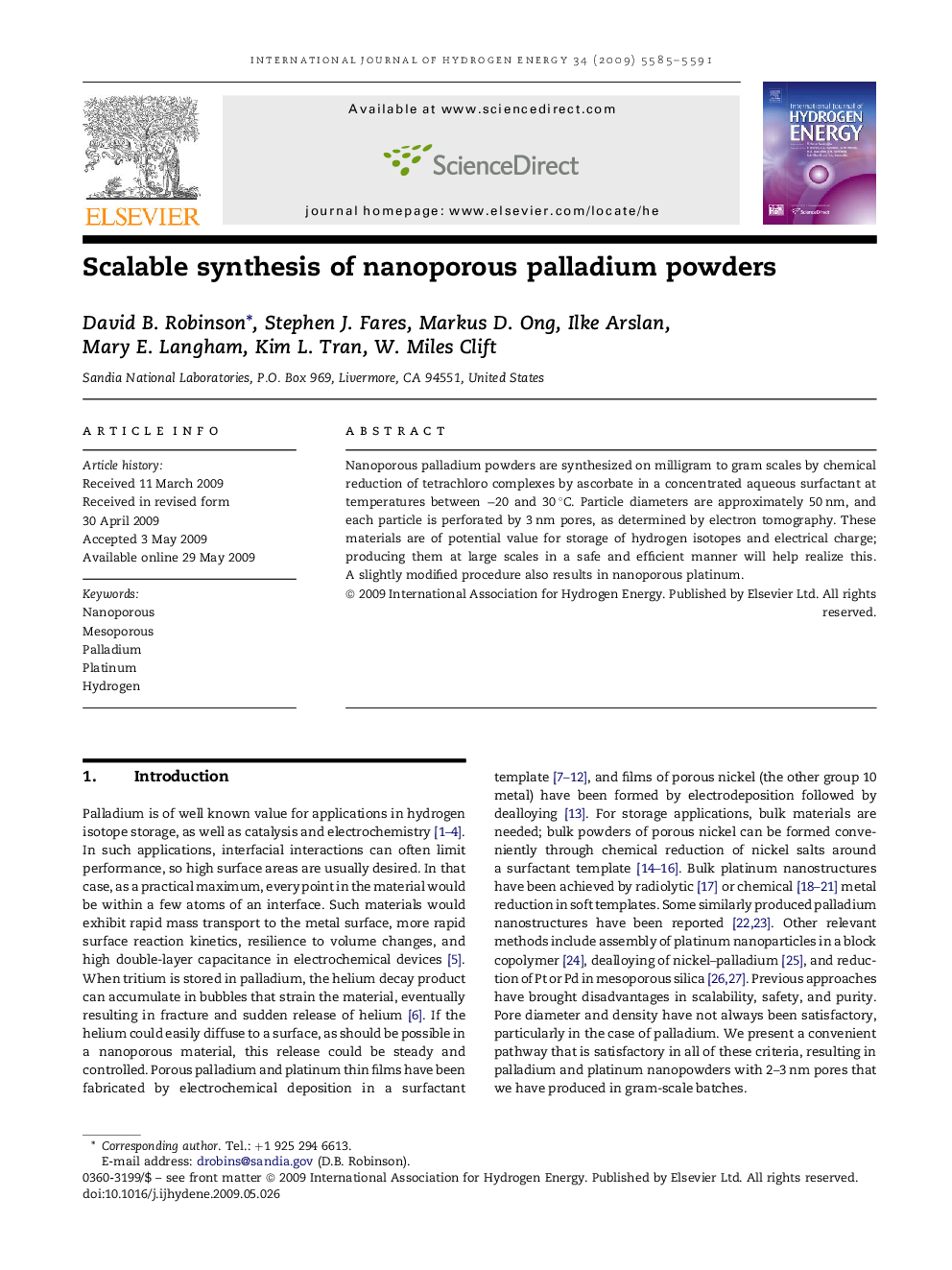| Article ID | Journal | Published Year | Pages | File Type |
|---|---|---|---|---|
| 1283209 | International Journal of Hydrogen Energy | 2009 | 7 Pages |
Abstract
Nanoporous palladium powders are synthesized on milligram to gram scales by chemical reduction of tetrachloro complexes by ascorbate in a concentrated aqueous surfactant at temperatures between −20 and 30 °C. Particle diameters are approximately 50 nm, and each particle is perforated by 3 nm pores, as determined by electron tomography. These materials are of potential value for storage of hydrogen isotopes and electrical charge; producing them at large scales in a safe and efficient manner will help realize this. A slightly modified procedure also results in nanoporous platinum.
Related Topics
Physical Sciences and Engineering
Chemistry
Electrochemistry
Authors
David B. Robinson, Stephen J. Fares, Markus D. Ong, Ilke Arslan, Mary E. Langham, Kim L. Tran, W. Miles Clift,
